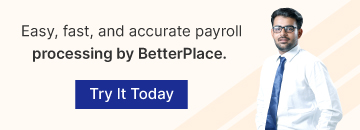Top 6 Payroll Trends to Lookout for in 2023
Payroll involves a lot more than only putting together an employee’s salary. It is essential to advocate better payroll policies in order for employees to be motivated and involved with the company.
The pay alone does not decide the employee’s involvement in the company; however, it surely does indicate the level the employee is at in the firm. As a result, it is essential to advocate better payroll policies in order for employees to be motivated and involved with the company.
Payroll involves a lot more than only putting together an employee’s salary. Let’s check out the top payroll trends that will make news this year and ensure a higher recruitment and retention rate.
1. Direct bank integrations for hassle-free, secure and faster salary payments
Earlier, the banks and the company payroll software were different entities. Their areas of operation were completely different, despite regular transactions. It leads to higher turnaround times, with the payroll software having to coordinate with the bank to process the salary payments.
With the introduction of technology, banks and payroll systems work in tandem to make the complete process simple, time-saving and effective for businesses as well as entrepreneurs. Such types of integrations have created newer opportunities for banks to interact directly with entrepreneurs and MSMEs, which are the best source of regular cash flow. This trend is more likely to continue in the future and grow in scale.


2. Meaningful automation
It is time to introduce meaningful automation in the payroll department. It’s not about introducing larger and entire system automation like automatic computation of taxes and salaries.
It is about automation of the smaller manual intensive tasks that take the most time from your payroll department. When we become accustomed to the traditional, outdated system, rarely do we think of the amount of time it takes to complete even the simplest tasks.
With automation, you free up valuable time and focus on more productive tasks in the department. Auto-generated employee compensation reports help the payroll department reduce their turnaround times and become more productive.
3. Personalised employee experience
The main factor in solving the challenges to personalisation is to ensure that the payroll and hr department uses technology that could adapt to the devices used by the employees. Mobile devices have become an important part of people’s lives.
With mobile devices now in every hand, it is important to create mobile-enabled self-service systems that help employees to view their payslips, swap shifts and view their performance history.
The company can use these systems to manage key issues related to payroll and HR and find effective solutions in real-time. The implementation of mobile self-services also helps companies to personalise the employee experience and create a positive employee company relationship.
4. Design compliance
Every region has its unique tax regulations and labour laws that make the process even more complex. Several businesses have a presence in various states and several small businesses across the country. Therefore, complying with the local regulations and financial laws can be a task for businesses.
With the advancement in payroll technology, automatic compliance systems have been introduced that are driven by data and have access to all the necessary information for following compliance in various regions of the country. This helps the business to stay updated with the latest changes in regulations and maintain compliance and avoid any legal issues.
5. Rich data insights that contribute to your payroll strategy
Payroll is one of the crucial functions in most companies. However, it faces various challenges as well as provides opportunities for improvement in the service delivery timeline. Companies often rely on manually generated analytics and established practices to effectively manage the results and processes created by the payroll department.
The rich data insights available from the automated payroll system and the HRMS can help you with dedicated analytics. this will help you define the Key Performance Indicators for the payroll functions and bring more efficiency to their daily operations. The use of a dashboard can help to improve the processing timelines and reduce the error rates in processing.
6. The use of cloud technology
Cloud systems have become an integral part of businesses. They help solve crucial business issues and help to handle the payroll functions effectively. In many companies, the payroll is usually handled by a small group of individuals with traditional solutions such as customised software and spreadsheets. The System helps to fulfil the most basic functions linked to the payroll system.
With the cloud-based payroll system, you can integrate accounting and HR to create stronger integrations with collaboration in real-time. For instance, the conversational chatbot installations empower the company to answer various employee queries in real-time with greater context and accuracy. Therefore, companies need to use cloud technology to integrate their payroll functions.
Newer developments in payroll technology and the incorporation of better levels of employee gratification by the company ensures that employees not only feel like they are an addition to a task force but an integral part of it. Therefore, it becomes increasingly important to understand and integrate newer payroll trends every year.
For assistance with payroll, connect with us at BetterPlace today. We have payroll experts who can make it easy for you.
Subscribe For Newsletter
Subscribe to get the latest news and happenings around recruitment space


